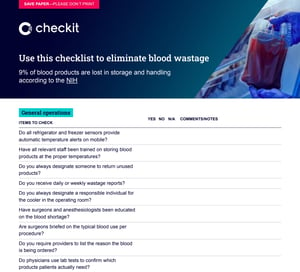The 2024 Blood Product Crisis
Why the young won’t donate, the dangers of cold chain waste, and how you can help
There are many ways to lose blood.
For patients, it happens in all the obvious and tragic ways— someone in the U.S. requires blood every two seconds, and Americans receive 42,000 units of red blood cells, platelets, and plasma every day.
But a devastating amount of that potential product is never collected and never makes it to the person who needs it in time.
In this guide, we share the latest statistics on the declining blood supply in both the U.S. and UK; the former supplies 70% of the world’s blood plasma, and the latter has begun collecting more blood products. In both countries, ample research exists to document the supply and cold chain issues in moving blood.
We’ll focus on three major causes. If they persist, they may soon trigger the largest blood supply crisis since the start of the COVID-19 pandemic:
- Persistent, declining donation rates
- Aging donors and reluctant youth
- How 9% is wasted in storage and handling
Throughout this guide, we share what you can personally can do to stem the tide and help save lives with very little effort.
.png?width=1633&height=1045&name=Copy%20of%20Ebook%20thumbnail%20-%20Blood%20crisis%20(1).png)
Download the Guide
You may also be interested in
.png?width=300&name=Careless%20Errors%201%20-%20Linkedin%201200x627%20(2).png)
Why preventable patient harm still occurs in hospitals- and how the right systems can prevent it.
Read More.png?width=300&name=ML%20-%20Linkedin%201200x627%20(2).png)
Cooling is one of those immensely difficult challenges AI wasn’t fit to address until this year. But now, a machine that can pass for a lawyer and an accountant can focus its vast computational powers on saving you small sums that add up to a lot.
Read More
Use this checklist to ensure your operation isn't losing blood due to storage and handling
Read More
